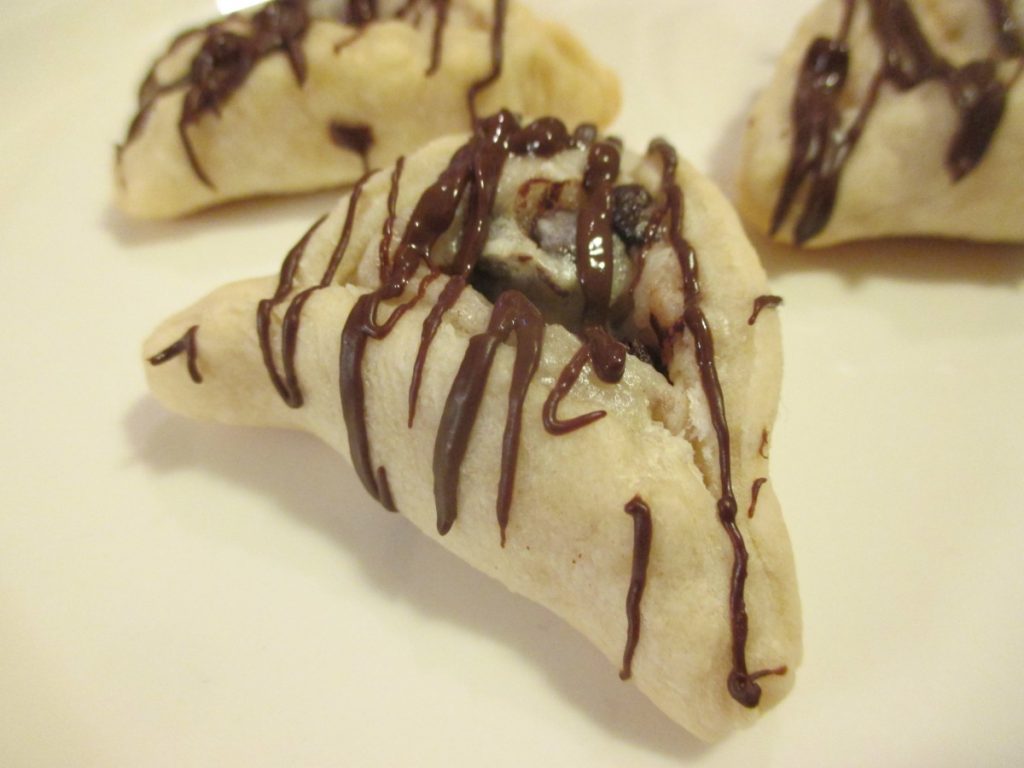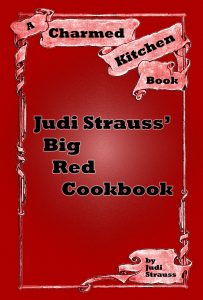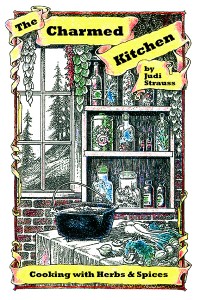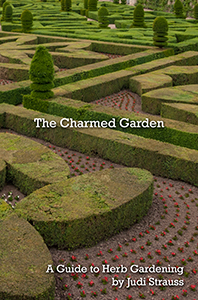Asparagus Irene
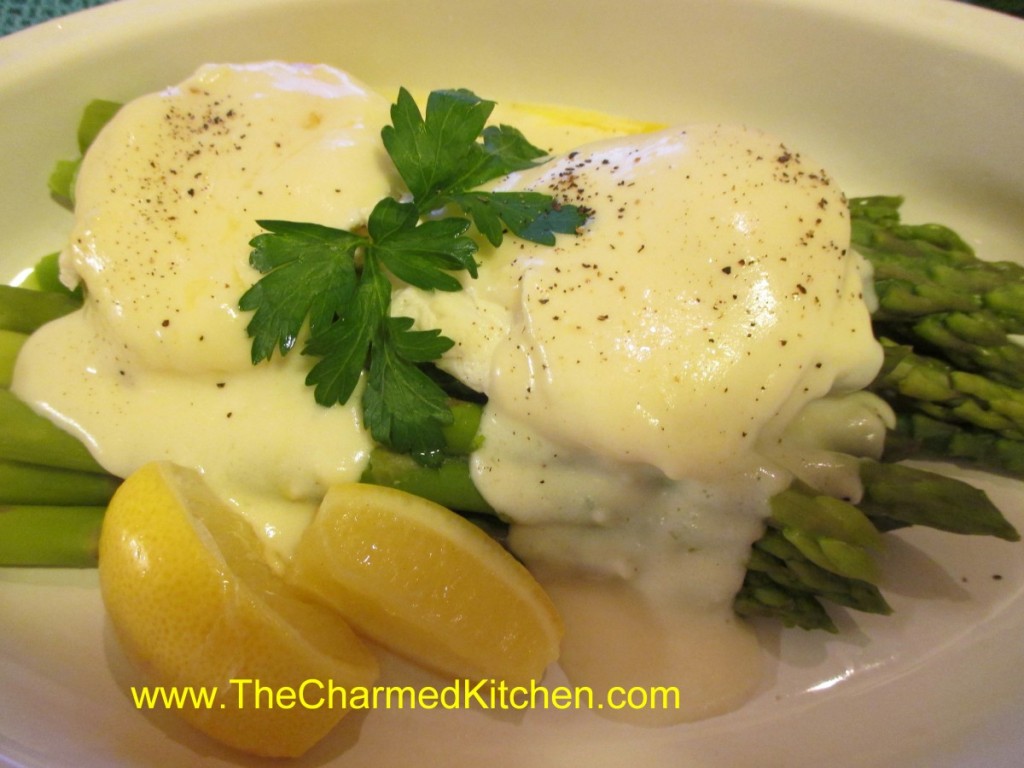
Asparagus will always be one of my favorite vegetables. I just love it. As I started writing out the recipe for this dish, I was thinking about my Mom and how much she loved asparagus. She always wanted the bigger asparagus spears- she said they had more flavor.
I remember her showing me how to break the bottom of the stalks off and how she would cook them until they were just done- but not mushy. She wouldn’t consider eating canned asparagus- only fresh- so the season was short. It was something to be savored while it lasted.
Most times she just placed the cooked asparagus on a plate, topped with a pat of butter and a sprinkle of salt. One time, though, she made a white sauce and poured it over the asparagus. It was bliss. For this version I used a white sauce, and topped the asparagus with 2 poached eggs, too. It is a lovely breakfast or brunch dish. Makes a great dinner, too. I named the dish after her.
Here is the recipe.
Asparagus Irene
1 lb. fresh asparagus, washed and stems trimmed
white sauce- recipe follows
fresh lemon, cut in wedges
2 eggs
vinegar- for the poaching water
salt and pepper to taste
Put the asparagus in a steamer and cook for about 5 minutes- or until almost done. Set aside. Make white sauce, but add some lemon juice to it. I just kept squeezing lemon wedges in until it tasted right to me. Set sauce aside. Boil some water in a shallow pan and add a tablespoon of vinegar to the water. Drop the two eggs in and simmer, covered until the whites are opaque and the yolks are still runny. While the eggs are cooking return the asparagus to the heat and cook until just tender. Place asparagus on a serving dish. Sprinkle with a little salt. Gently place the eggs on top of the asparagus. Spoon some of the white sauce over the eggs. You will have more sauce than you need. Save it for another use. Garnish with lemon wedges and parsley, if you like. Finish with some salt and fresh ground pepper. Serves 2.
Basic White Sauce (Bechamel)
The start of many a classic dish.
2 T. butter or oil
2 T. flour
1 1/4 c. warmed milk
salt and pepper to taste
In saucepan melt butter or heat oil and add flour, stirring until smooth. Slowly whisk in milk, stirring constantly until thickened and bubbly. Turn heat down and continue to cook, stirring constantly for a couple minutes longer. Season to taste. If you are going to store the sauce for later use place a layer of wax paper on top, store in a container with a lid or pour a little milk over the top to prevent a skin from forming. Makes about 1 c.
Lemon: Add zest of a lemon, 2 T. lemon juice and 2 T. butter just before serving.
Mom’s Creamed Spinach
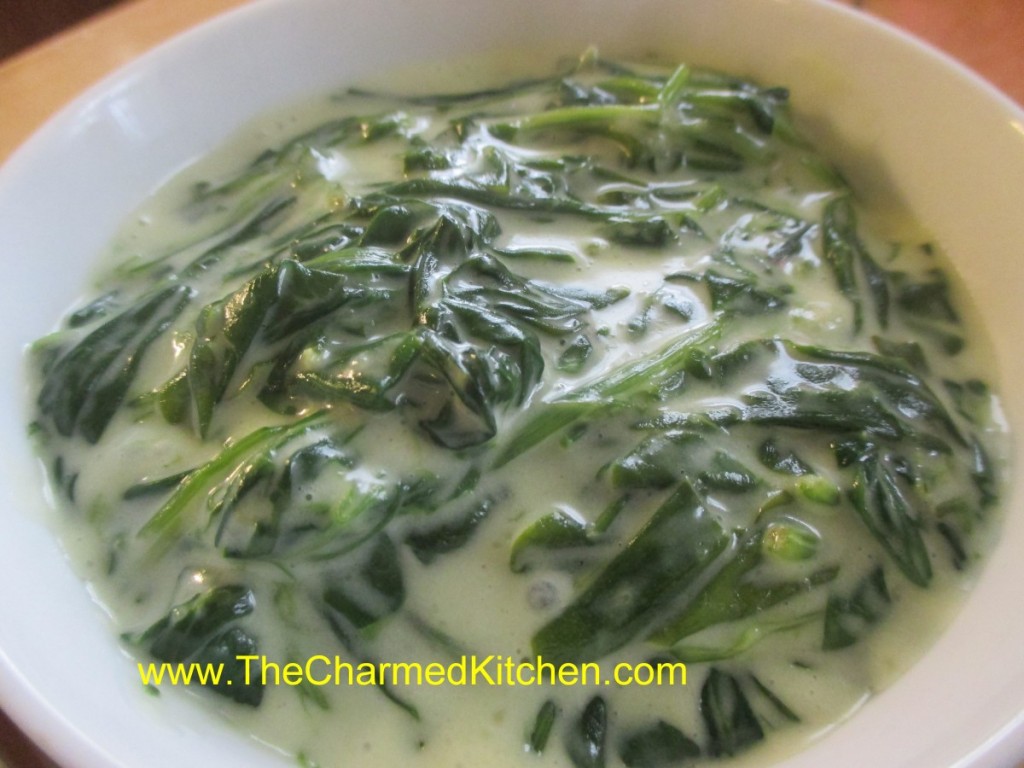
Creamed spinach is one of my favorite dishes. A fond memory from childhood, too. Some foods are about more than food. Creamed spinach is a wonderful side dish, but honestly, I could make a meal out of it.
Creamed spinach always makes me think of my mother. I can remember watching her make creamed spinach, thickening the sauce, and watching her stir the spinach mixture as it became thickened and bubbly. She would let me stir it, to keep it from sticking. It was always one of my favorite dishes- as a kid and today.
Mom really liked spinach. She cooked with spinach a lot. She also made pork chops Florentine, occasionally rolled spinach inside a boneless turkey breast and made a wonderful spinach salad with a sweet and sour dressing, hard cooked eggs and croutons. Here is her recipe. Enjoy!!
Mom’s Creamed Spinach
2 (10 oz.) packages frozen spinach or 2 lbs. fresh spinach, washed and stemmed
1 T. butter
1 c. milk – or half and half
2-3 T. flour
salt and pepper to taste
1/2 t. dill weed
Cook spinach in a small amount of water and drain when heated through or wilted. Return spinach to pot and add butter. Place milk and flour in jar with tight fitting lid and shake until well mixed. Add to spinach and cook, stirring constantly until thickened and bubbly. Season to taste and serve.
Coconut Shrimp
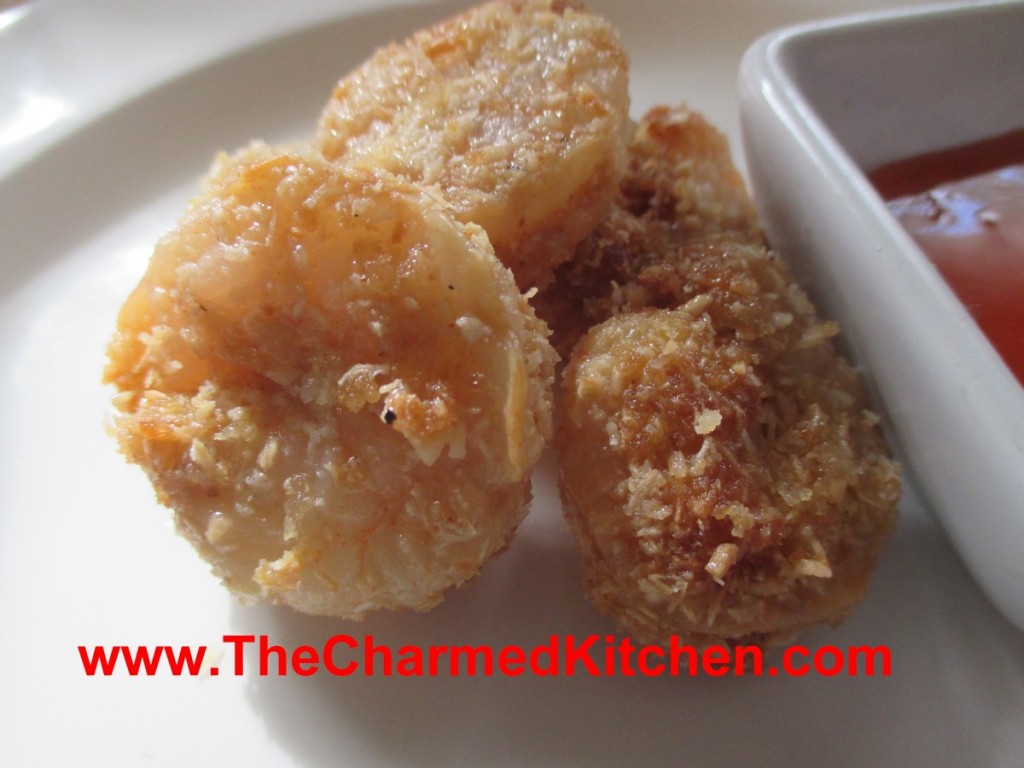
Coconut shrimp is a favorite of mine, and pretty easy to make. Cleaned, raw shrimp are dredged in flour, egg wash and a Panko bread crumb-coconut mix, then fried or baked. I added some homemade Ethiopian seasoning to the eggs, for a little extra flavor.
You can serve coconut shrimp as an appetizer or with rice as a main dish. We had the shrimp last night with rice, carrots and lamb shanks as a sort of surf and turf dinner.
At a recent class, I was using desiccated coconut in a dessert. I was asked a lot of questions about it. This is not the coarsely shredded sweetened version you will find at the local grocery store. Desiccated coconut looks like white bread crumbs. That is the coconut used in this dish.
Here is my recipe for coconut shrimp. You don’t need a special occasion to make it, but it makes any occasion special.
Coconut Shrimp
1/4 -2 cups oil – depending on if you are frying or baking them
1 cup Panko bread crumbs
1 cup unsweetened shredded coconut- often found in Asian grocery stores or in candy making stores
1 pound shrimp, peeled and deveined
salt and freshly ground black pepper, to taste
1/2 cup all-purpose flour
2 large eggs, beaten
1-2 t. Ethiopian seasoning, or to taste, recipe follows
Frying method: In a large bowl, combine Panko bread crumbs and shredded coconut; set aside. Combine eggs with Ethiopian seasoning, set aside. Season shrimp with salt and pepper, to taste. Working one at a time, dredge shrimp in the flour, dip into the egg mixture, then dredge in the coconut mixture, pressing to coat. Set aside until all the shrimp are breaded. Heat 2 c. oil in a large skillet or Dutch oven over medium high heat. Working in batches, add shrimp to the Dutch oven and fry until evenly golden brown and crispy, about 2-3 minutes. Transfer to a paper towel-lined plate. Serve immediately,with sweet chili sauce, if desired. Serves 4.
Baking Method: In a large bowl, combine Panko bread crumbs and shredded coconut; set aside. Combine eggs with Ethiopian seasoning, set aside. Season shrimp with salt and pepper, to taste. Working one at a time, dredge shrimp in the flour, dip into the egg mixture, then dredge in the coconut mixture, pressing to coat. Set aside until all the shrimp are breaded. Heat oven to 425 degrees. Using about 1/4 cup of oil, brush oil on a baking sheet , place shrimp on the oiled sheet, then drizzle shrimp with a little more oil. Bake shrimp 10 minutes, then turn shrimp over and bake 5 more minutes. Remove from oven and serve. Serves 4.
Ethiopian Seasoning
1 T. paprika
1 t. each cayenne pepper, cumin, garlic powder and ginger
½ t. allspice
¼ t. cinnamon
Combine all ingredients. Store in a cool, dry place.
Hot Cross Buns

These rich rolls are a traditional at Easter. At least they are in my house. The dough is rich and slightly sweet. The frosting on top adds to their sweetness.
Hot cross buns can be served at breakfast, brunch or even as a dinner roll. I have served them with coffee, after dinner. So I guess they can be a dessert, too. If you have leftover hot cross buns, you can use them to make bread pudding. I do!
Because the dough is rich, they are slow to rise. If they aren’t jumping out of the pan after an hour or so, don’t worry. They do rise quite a lot in the oven.
After they cool a bit- pipe on the icing in the crisscross pattern that gives these rolls their name.
Hot Cross Buns
2/3 c. sugar
1 t. salt
2 packages active dry yeast
About 5 cups bread flour
1 ½ c. milk
½ c. butter
2 eggs
1 c. raisins
Icing
¾ c. powdered sugar
1 T. milk
In bowl combine sugar, salt, yeast and about 1 ½ c. flour. Heat together milk and butter until very warm. Beat milk mixture into to flour mixture and beat 2 minutes with electric mixer. Beat in 1 egg and 1 cup flour and beat 2 more minutes until batter thickens. Stir in raisins and enough additional flour to make a soft dough. Turn dough onto a floured surface and knead until smooth, about 10 minutes. Place dough in greased bowl, turning to grease top, cover with a towel and allow to rise in a draft free place until doubled in bulk, about 1 hour.
Place dough on floured surface and divide into 15 equal pieces. Cover with towel and lest rest 15 minutes. Meanwhile grease a 9×13 inch pan. Form dough into smooth balls and place in prepared pan. Cover and let rise until doubled, about an hour. Preheat oven to 350 degrees. Beat remaining egg. Cut a cross in each bun and brush with the egg. Bake for 25 minutes or until buns are golden. Remove buns to wire rack to cool 15 minutes. Make frosting, place in decorating bag and pipe onto buns. Makes 15.
Coconut Chocolate Bowls
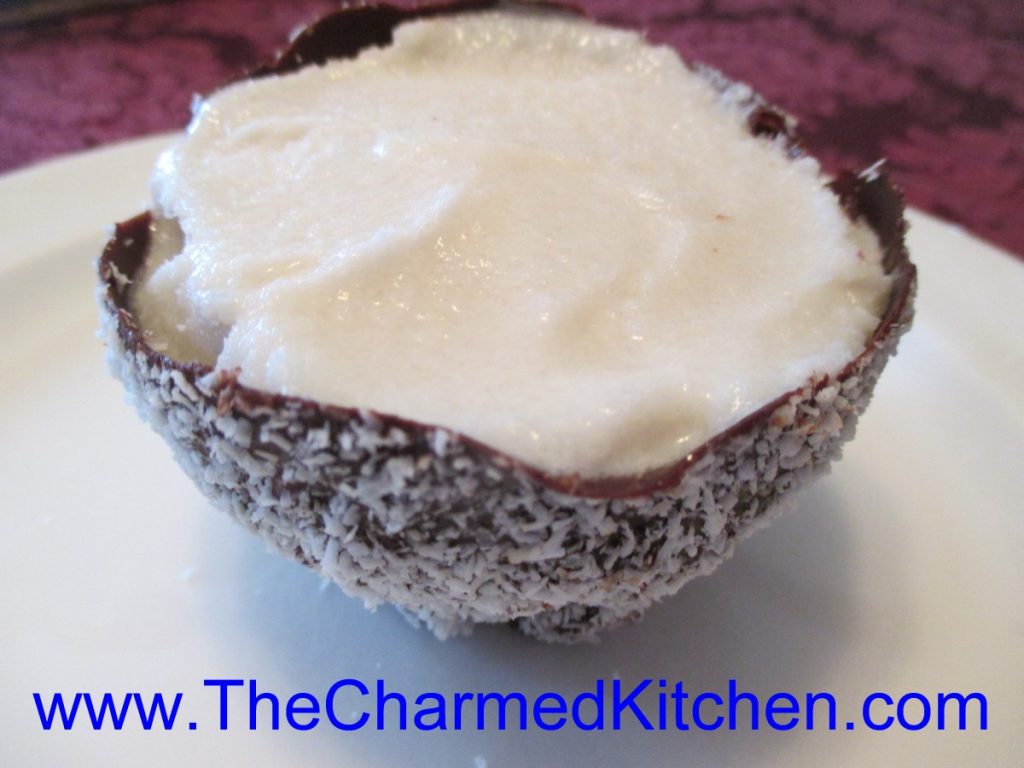
Now this is fun. Coconut almond sorbet served in chocolate bowls. The idea is to make the dessert look like coconuts. It worked out well and tasted great. The whole dessert is dairy free and vegan as well. Great for people who have issues with dairy. You won’t miss the dairy in this recipe. The sorbet is smooth and creamy.
These are fun to serve for summer parties. You can make everything ahead of time, assemble and keep in the freezer until you want them. I served them at an April Fool’s Dinner a couple of years ago.
So here are the directions for the bowls and the recipe for the sorbet.
The bowls are made by dipping inflated balloons in melted bittersweet chocolate. Then you coat them is desiccated coconut to cover the chocolate. Desiccated coconut is dry and unsweetened. It looks like white bread crumbs. You can find it at Asian markets (it is the type of coconut used for coconut shrimp) . It is also found at cake decorating and candy making stores.
Place them on wax paper. Let the bowls set- in fridge or freezer- until the chocolate hardens. Then you just pop the balloons and remove them. You are left with a chocolate bowl. I have the best luck removing the balloons when I put the bowls in the freezer to set. Fill the bowls with the sorbet- you could use vanilla ice cream, I suppose, but the coconut sorbet really is better in this dish.
You can serve them as is- or top with some fresh fruit or chocolate sauce.
Inspired by a friend who can’t have dairy, I made this coconut sorbet. I started with a can of coconut milk, added some almond milk, sweetened it, and added vanilla for a little added flavor. So simple and really tasty.
It has a lot of the creaminess of a dairy based dessert. In fact, if you didn’t know, you would probably think there is some milk or cream in this sorbet, even though there isn’t.
Looking forward to making some for my vegan niece the next time she comes to town.
Coconut Almond Sorbet
1 can (13.5 oz.) coconut milk
1 c. almond milk
¼ c. sugar- or to taste
2 t. vanilla
Combine all ingredients in bowl and stir until sugar is dissolved. Place in an ice cream maker and freeze according to manufacturer’s instructions. Makes 1 quart.
Note: If you don’t have an ice cream machine, you can freeze the sorbet in a shallow tray. Once frozen, remove from freezer and let it soften a few minutes. Break into chunks and process in a food processor to soften. Return to freezer until ready to eat.
Lemon Tea Cake
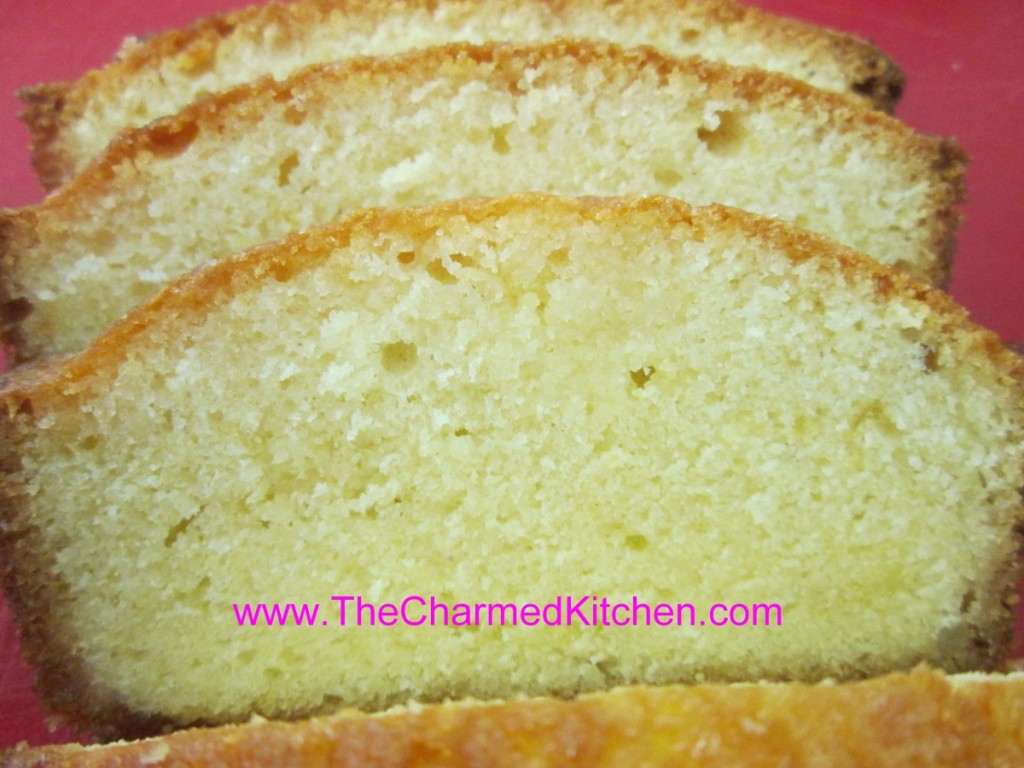
This is one of my favorite cakes of all time. It is a simple cake, enhanced with the flavor of lemon juice and lemon zest. Once out of the oven, you poke the hot cake with a large fork or a skewer, and pour a lemon syrup over it. The syrup gives the cake an extra lemony tang. It is a perfect addition to afternoon tea.
Great all on its own, this cake is also wonderful served with fresh berries and whipped cream for a Spring dessert. On a hot day, I have been known to top it with a scoop of ice cream.
Before you ask, the measurements are correct- only 3/4 cup of flour. No leaveners like baking powder or baking soda, either. The cake does not rise a whole bunch, but the texture is still very nice. The texture of the cake helps it to stand up to the lemon syrup.
Lemon Tea Cake
2 lemons
3 T. sugar for topping
½ c. butter, softened
¾ c. sugar
2 eggs, beaten
3/4 c. flour
6 T. milk or half and half
Preheat oven to 375 degrees. Grease an 8- inch loaf pan and line with wax or parchment paper. Grate the lemon rinds and set aside. Combine the juice of 1 of the lemons with the 3 tablespoons of sugar, stirring to dissolve sugar. Set aside.
Cream together the butter with the rest of the sugar and beat until fluffy. Beat in the eggs, a little at a time until well mixed. Stir in the flour and lemon peel and beat well. Add the milk and beat well. Pour batter into prepared pan and bake at least an hour. The cake should spring back when touched lightly. As soon as you remove the cake from the oven pierce it all over with a long-tined fork or a skewer. Pour over the reserved lemon juice mixture. Cool cake in pan before serving. Cake will be moist and tangy.
Shrimp and Grits
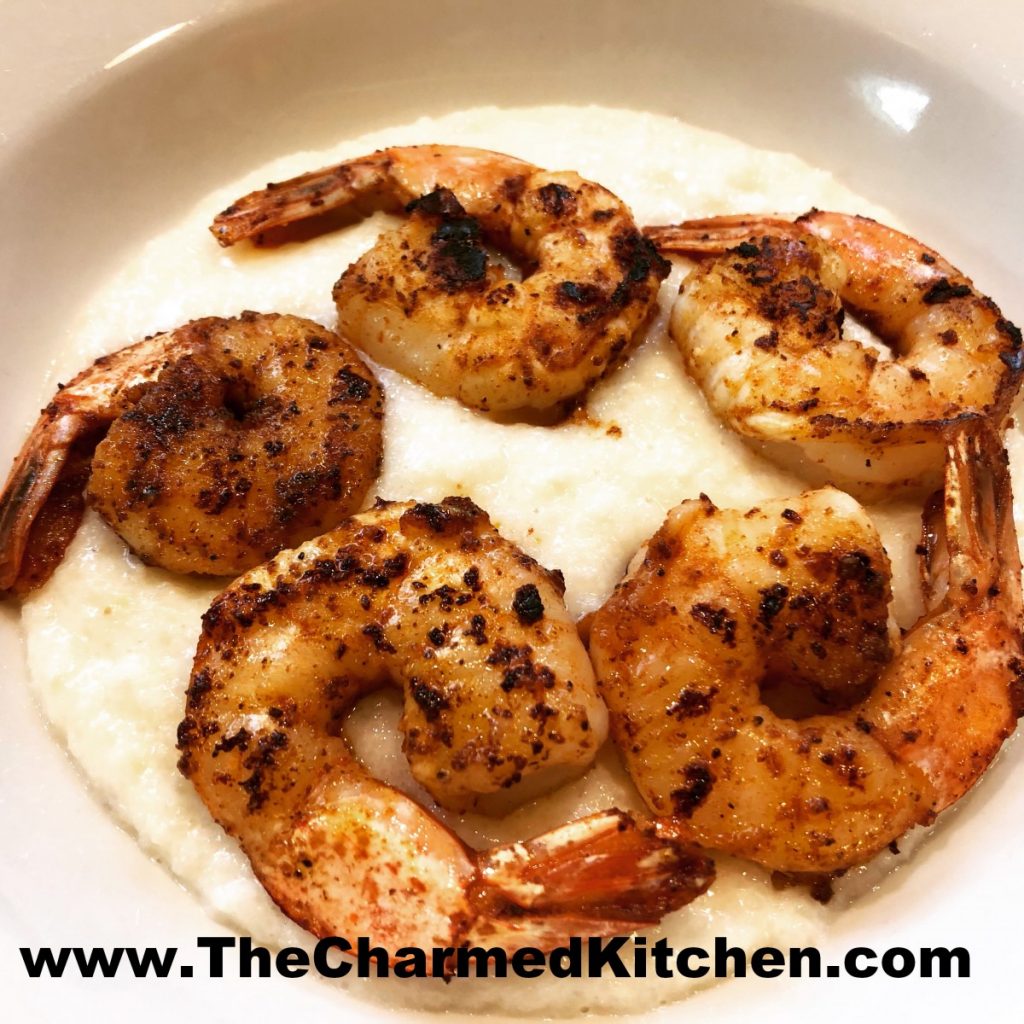
A fun way to celebrate almost any special occasion is with shrimp and grits. Everybody seems to love them. I made these for a friend’s birthday. As an added bonus, they are fast and easy to make. It’s all in the timing. Get your grits simmering on the stove, while you clean and season the shrimp. Once the grits are ready, keep them warm and quickly saute the shrimp. Then just serve them up.
Some folks like to add cheese to the grits. I did this time, but feel free to omit cheese, if you like. Sharp cheddar or Parmesan are good choices. Add the cheese when you add the cream and butter.
I didn’t get specific on how much of the seasonings to add. I dusted the shrimp with the seasonings and tossed to get them all coated evenly. I was generous with all but the cayenne. I used about a 1/4 teaspoon of cayenne. They still had a nice kick, but I had a guest coming who doesn’t like spicy foods. You can always serve them with hot sauce on the side, so guests who like spicier foods can add that to their shrimp.
Shrimp and Grits
1 c. grits, I used regular grits, not quick cooking
4 c. water
½ t. salt
3 T. butter
1/3 cup heavy cream
1 c. shredded sharp cheddar cheese
1 lb. large raw shrimp, shelled and deveined
Salt
Pepper
Cayenne pepper
Garlic powder
Paprika
2 T. oil
2 T. butter
In saucepan, bring water to a boil and add the grits and salt. Turn down to a simmer and cover the pan. Stir every few minutes. Cook until grits are tender and water is absorbed, about 20 minutes. While the grits are cooking, place shrimp in medium bowl and season to taste with the salt, pepper, cayenne, garlic powder and paprika. Toss shrimp to coat evenly and set aside. Once grits are done cooking, stir in the cream and butter. Adjust seasoning. Cover and remove from the heat. Heat oil and butter in skillet and cook shrimp over medium high heat, turning to cook on both sides until shrimp are cooked, about 5 minutes. They should get a nice, golden color. Larger shrimp will take longer, but be careful not to overcook them. To serve, spoon some grits on a plate or in a shallow bowl. Top with some shrimp and serve. Serves 4.
Russian Tea Biscuits
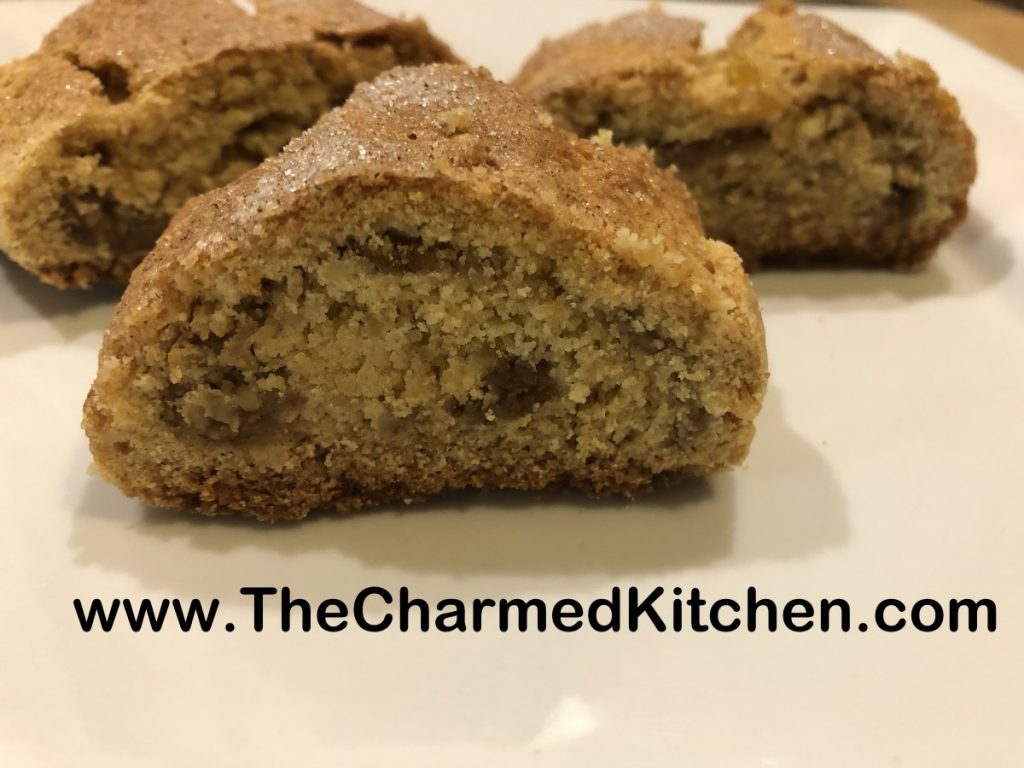
Russian tea biscuits are like a kind of cookie. A magical cookie, filled with jam and raisins and nuts. The are crispy, tender and rich. They also are not all that sweet, which appeals to me. You can serve them as a dessert, but also serve them with breakfast or brunch. And of course, with your tea or coffee.
I can remember the first time I ever had a Russian tea biscuit. It was at the Cedar-Lee theater. I guess you could say I got my love for foreign films and Russian pastry at the same place. I found a recipe in my mother’s recipe collection. I tried them and they were pretty close to the ones at the Cedar-Lee. I did tweak that recipe a bit.
My only regret was not having raspberry jam. That is my favorite. The swirl of red in the biscuits is very pretty. I used what I had- peach- and am happy with them. Not as colorful, but very tasty, all the same.
Here is the recipe. I think you might want to try these with that next cup of tea.
Russian Tea Biscuits
3½ c. flour
½ c. sugar
1 t. baking powder
1 t. baking soda
¼ t. salt
1 c. butter, softened
2 eggs, separated
½ c. orange juice
1 1/3 c. preserves, (strawberry, raspberry, plum or apricot are favorites)
1 c. chopped walnuts
1 c. raisins, dark or golden
1 t. cinnamon
3 T. sugar
Combine dry ingredients in a mixing bowl and cut in butter until mixture is the size of peas. Stir in egg yolks and orange juice. Knead until dough is well blended. Divide dough into 4 equal pieces. Roll out a piece of dough 1/4 -inch thick into an 8×10-inch rectangle. Spread with 1/3 c. of the preserves and sprinkle with 1/4 c. each of the raisins and nuts. Roll up jelly roll fashion and set, seam side down, on ungreased baking sheet. Repeat with remaining dough. Beat egg whites until foamy and brush on dough. Combine cinnamon and sugar and sprinkle on dough. Bake in a 350-degee oven for 25-35 minutes, or until golden. Use a toothpick to test for doneness. They can be golden, but a little under baked in the middle. Slice while warm into 6 pieces for each roll. Makes 24.
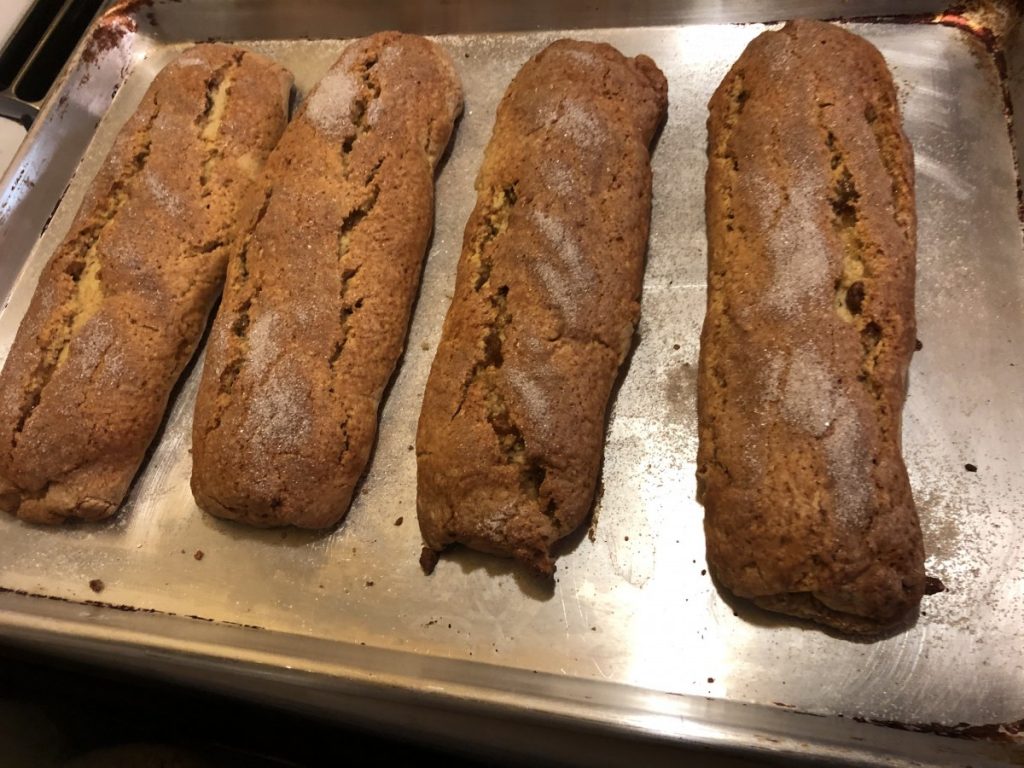
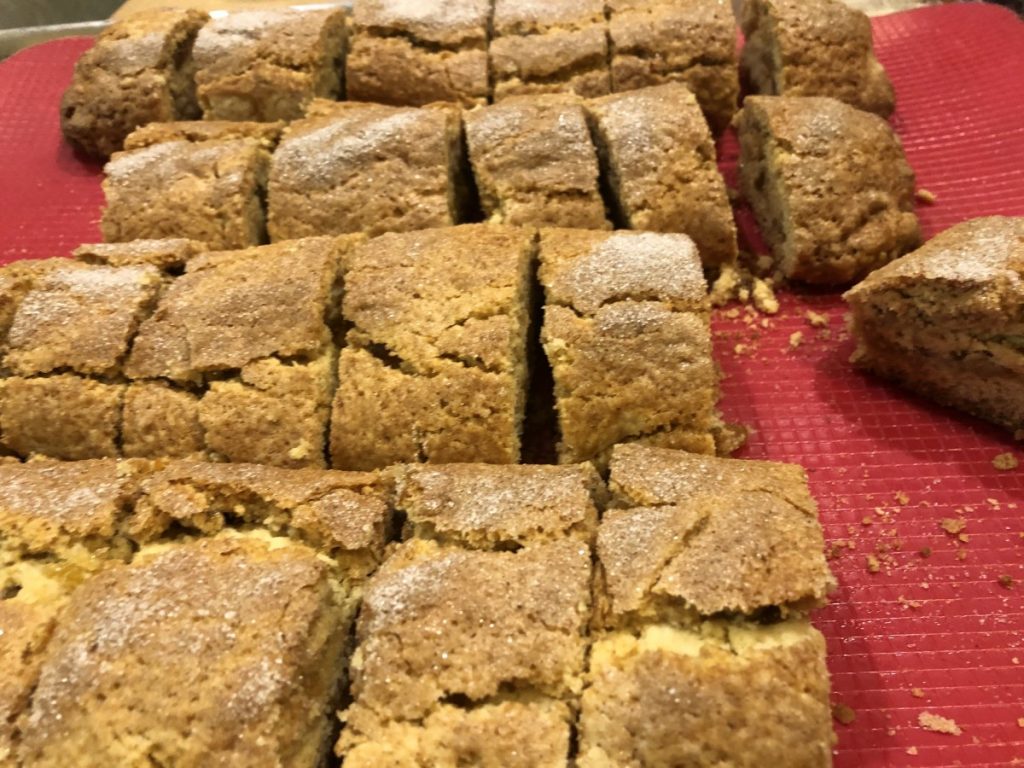
Creamy Spinach Sauce
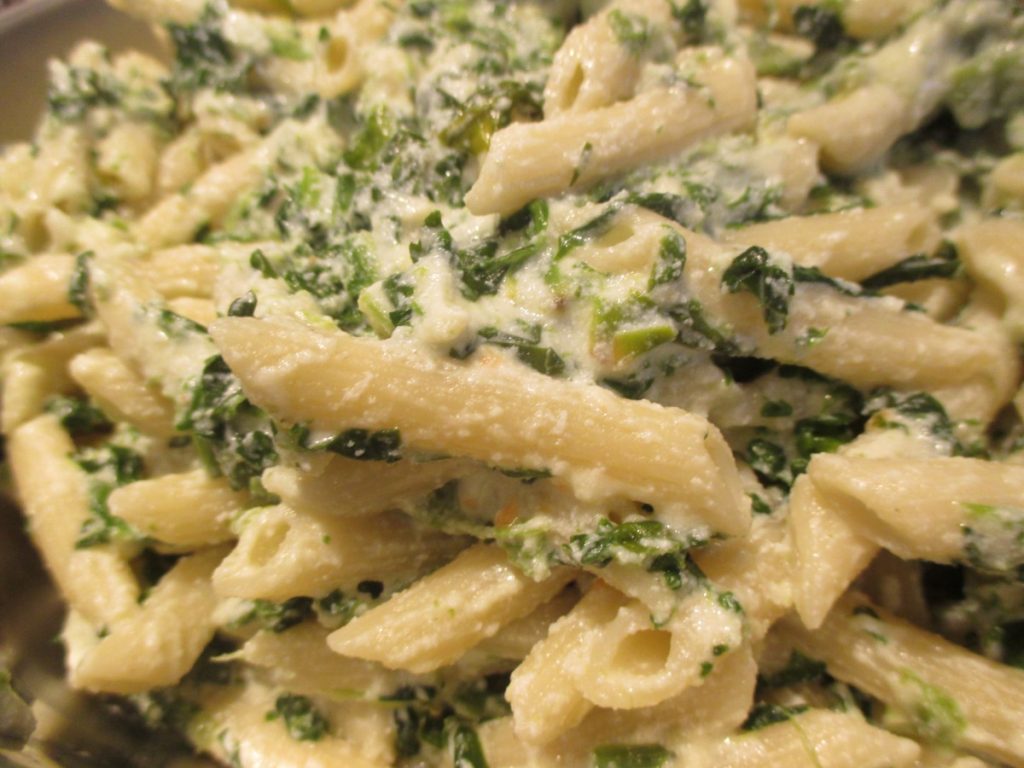
The sauce reminds me of creamed spinach, a favorite childhood dish of mine. The recipe makes enough to generously sauce a pound of pasta. It is very tasty and easy to make. Great when you need a home made meal, but don’t have a lot of time. You can also use this sauce on hot cooked rice or baked potatoes.
The recipe uses frozen spinach, but you can use fresh spinach , if you prefer. Just cook down 12-16 oz. of fresh spinach and use like the frozen spinach.
There is Parmesan cheese in the sauce. I like to serve extra on the side.
Creamy Spinach Sauce
1/4 c. butter
1 (10 oz.) package frozen spinach, thawed and drained
1 t. salt
1 c. ricotta cheese
1/4 c. grated Parmesan cheese
1/4 c. milk
Heat spinach in butter for 5 minutes. Add remaining ingredients and heat gently until warmed through. Do not boil sauce. Toss sauce over hot, cooked pasta. Makes 2 1/2 cups, enough for about a pound of pasta.

